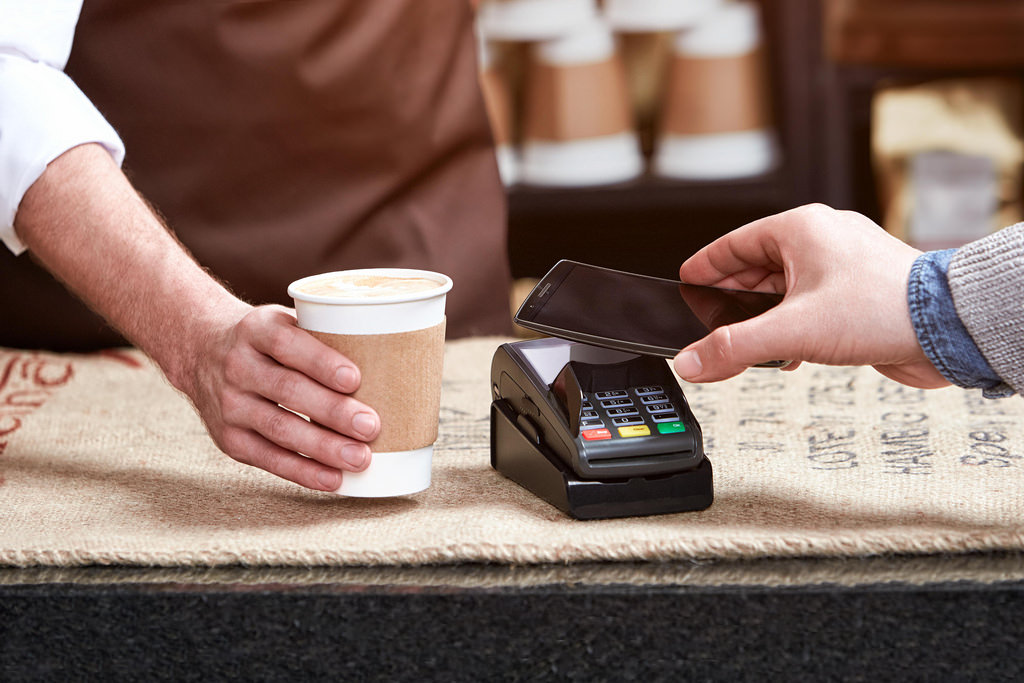
Convenience in payment methods is being pushed as a major user advantage, but is it? How convenient payment methods trade long term finances for short term comfort.
Last week the New York Times published an article comparing chip cards to what is known as “mobile payment methods” (or “e-wallets” ). Retailers in the US are being prompted by new legislation to upgrade to read chip cards. The point of the New York Times article was that mobile payment methods, while being about as secure as chip cards, are far more convenient and faster to process than chip cards. In the article this was framed as a major win for e-wallets:
“Mobile wallets feel faster, more convenient and less awkward to use than the chip, so you should use them whenever possible.”, -Brian X. Chen
But how convenient do we truly want our payment to be? Creating a frictionless experience of payment methods may be good for customer experience while paying, but is much less so when the same users check their bank accounts at the end of the month. The reasons for both of these is to be found in the same cause: a pleasant user experience. What the mobile payment methods master is decreasing the unpleasantness of the purchase by:
- Making it harder to remember.
- Making it less painful.
- Making it harder to recognize the need for self-control.
1 Did I Really Buy That Much?
This might strike you as simple, but your past expenses impact your decisions to purchase new things. Only it is not your actual past expenses, but your recollection of your past expenses that impacts your purchasing decisions. That makes it a bit less simple, because now it’s about memory as well. The payment method matters, because different payment methods make you remember your expenses differently. Indeed, this is seen in experiments where people underestimate their past expenses more when they use credit cards than when they use cheques [1].
This is caused by the fact that the amount you remember of something is related to how much attention you pay to it [4]. Therefore, users have a hard time recalling how much they spent when the payment requires very little from them. The less you pay attention to paying, the less you remember paying. This can cause people to underestimate how much they have spent, and in return give them a feeling of having more money than they actually do.
2 The Pain of Paying
The pain that people feel when paying is a hugely important factor in their decision to purchase. Interestingly, the pain is not just fixed to the amount of money that people have to pay, but among other things, the transparency of the payment. Paying with cash is a very salient payment method both in terms of its physical form as well as the amount paid. You have to pull money out of your wallet and give them away, getting less in return. It’s clear that you’re losing something, and how much. When moving to payment methods such as credit cards and mobile payment the salience decreases on both dimensions making it ever more difficult for consumers to experience the pain of paying [2]. When you use your phone as a payment system, you don’t even have to get your wallet out. The transaction becomes just another thing you do with your phone, between checking Facebook and calling a friend.
3 It Is With Finances As With Eating Crisps
Another aspect of the lacking pain of paying, is that it reduces our ability to exercise self-control. Our self-control is in large parts based on our ability to monitor our own behaviour. We need to be aware of what we do in order to regulate what we do [3]. This may sound simple, but the nudge literature on food consumption is a tour de force on how people do things mindlessly. Brian Wansink has designed some interesting experiments showing this, testing for instance how putting red crisps in a tube of yellow ones impacts the amount that people eat. He placed a red crisp for every 5 yellow crisps , and saw a reduction in the number of crisps eaten per person by 53%.
The red crisp catches the attention of people making them aware of their own behaviour. It is with finances as with eating: we need to be aware that we are performing an action worthy of our attention, if we want to control it. If we remove the pain of paying from the payment itself, we may end up overspending. Not because we lack willpower, but because we might fail to become aware that exercising willpower is needed.
Mobile Payment Methods
The new mobile payment methods have worked hard to make sure that paying is as easy for you as it can be. Some apps just require you to select a card and let the phone read your fingerprint. If the payment methods were easy with credit cards, now they are entering a whole new area where we barely notice that we made a purchase. Because the NY Times piece is right; the mobile payment methods are vastly ahead of the curve, when it comes to creating a nice payment experience.
We need to remember and feel the costs of our purchases, because they matter, and because we need to notice them to exercise restraint. While the mobile payment methods may feel better and more convenient for us, there is good reason to believe they might encourage frivolous spending that we later regret.
The mobile payment methods are part of a societal trend towards convenience. In Denmark we have begun to introduce cards that only need to be waved in front of a scanner to finish smaller transactions of less than 200 DKR (30 USD). No password entered and no money handed over. In the end, do we as consumers really want to adhere to the current progress within payment methods, knowing that this trend might be too convenient for your own good?
References:
- [1] Soman, D. (2001). Effects of payment mechanism on spending behavior: The role of rehearsal and immediacy of payments. Journal of Consumer Research, 27(4), 460-474.
- [2] Soman, D. (2003). The effect of payment transparency on consumption: Quasi-experiments from the field. Marketing Letters, 14(3), 173-183.
- [3] Baumeister, R. F. (2002). Yielding to temptation: Self‐control failure, impulsive purchasing, and consumer behavior. Journal of consumer Research, 28(4), 670-676.
- [4] Seamon, J. G., Goodkind, M. S., Dumey, A. D., Dick, E., Aufseeser, M. S., Strickland, S. E., Woulfin, J. R. & Fung, N. S. (2003). “If I didn’t write it, why would I remember it?” Effects of encoding, attention, and practice on accurate and false memory. Memory & Cognition, 31(3), 445-457.
- [5] Thomas, M., Desai, K. K., & Seenivasan, S. (2011). How credit card payments increase unhealthy food purchases: visceral regulation of vices. Journal of consumer research, 38(1), 126-139.

